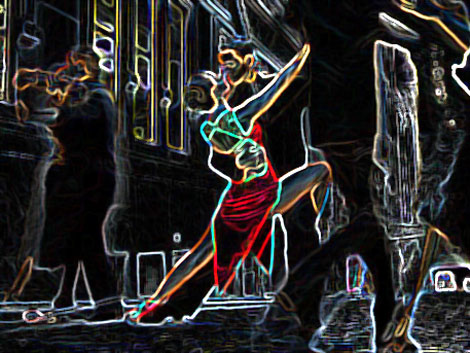
Tango is, of course, an obsession in Buenos Aires. If you’re living in San Telmo – the heart of tango territory – it’s not uncommon for locals to start a conversation with you by asking “so, are you here to learn tango?” And it’s not just the dance that’s an obsession, but everything that goes with it as well: the clothes; the milongas, and most of all, the music. Given this obsession, it’s not surprising to find elements of tango have mutated in ways that take them beyond their traditional forms. One of these mutations is ‘tango electronica,’ also known ‘electrotango.’
For the hip BA expat, tango electronica represents a more up-to-date form of tango music, and consequently one that might appeal more than the old-timey versions. If you think it sounds interesting, read on for the best ways to listen to the bleeding edge of tango music.
A little bit of history
With instruments such as the bandoneón, the double bass, the piano and the violin, the traditional tango orchestra produces a sound that is lush, melodious, complex and grandiose, with a tempo of about 120 beats per minute. These groups, usually sextets, have been creating traditional tango music for over a century, with a ‘golden age’ between 1935 and 1952.
Tango electronica, on the other hand, is a much more recent invention. Paris-based group Gotan Project were one of the first to test the idea of adding electronic elements to tango music around the year 2000, and since then many other groups have followed suit. Some groups add electronically-generated sounds to traditional tango music in a subtle way (Gotan Project are normally placed in this category), while others have made the ‘electronica’ part of ‘tango electronica’ much more dominant.
3 of the best tango electronica albums
Intrigued? Then your electrotango education should begin with the following three albums:
1. La Revancha del Tango. This is Gotan Project’s 2001 album. It’s a mix of tango and chillout sounds, creating a sexy and hip lounge favorite. It’s credited with bringing tango to an entirely new audience.
(An aside: You’ve probably heard of Gotan Project before, but did you know that ‘Gotan’ comes from a Lunfardo wordplay on ‘Tango’? Tango Project was the name of an influential tango album that was released in the 198s.)
2. Bajofondo Tango Club. This self-titled 2002 album from Bajofondo Tango Club is an excellent introduction to tango electronica. Bajofondo are an Argentinean octet who mix conventional tango music with drum ‘n’ bass, French house, and trip-hop. Tango singers both past and present are sampled. This album won a Latin Grammy for Best Pop Instrumental Album…even though it actually has vocals! (Guess the judges really liked it.)
Interestingly, the band Bajofondo won’t be happy to be mentioned in this company: “We don’t like the label ‘electronic tango’ because we try to make a contemporary music of Rio de la Plata from Argentina and Uruguay,” says composer Gustavo Santaolalla on the band’s website. Whatever, che!
3. Emigrante (electrotango). Another very influential tango electronica album, this one comes from the four-person group Tanghetto. Released in 2003, it was nominated for a Latin Grammy in 2004 and went platinum in Argentina in 2006. It melds acoustic and electronically generated sounds and has a theme: immigration, both to and from Argentina.
Finding live tango electronica
Albums are all well and good, but what about live tango electronica? Actually that’s a little harder to find. You can look out for gigs from bands such as Gotan Project and Bajofondo, but otherwise you’ll have to go to a milonga or a practica (wear your dancing shoes!). To hunt for one that’s likely to throw electrotango into the set list, try the www.NeoTango.info website, in particular the listings page at www.neotango.info/neotango_listings/index.htm, and the forum located at www.neotango.info/forum/index.php.

4 Comments on “Tango Electronica?!? What is it All About?”
Electronica has been adopted by the nuevo crowd, who dance their moves with little regard to the music that is playing. While I enjoy listening to it, as someone who likes the traditional milongas, I find it virtually impossible to dance to.
The golden age tangos while sounding at first totally random actually follow a quite distinct pattern and as such are easy to follow (once you know how they work) electronica on the other hand is more random and difficult to follow. (I leave out the likes of Colour Tango who although modern play traditional music in a modern way)
Dominique Zatarain
tangobob: spoken like a true “Wahhh it isn’t real tango” traditionalist. Here’s a tip: there are far, far more people dancing “traditional” tango with *no* regard to the music. If you don’t *like* the music, well, that’s an issue of personal taste. If you can’t dance to it then maybe you need to update your skillset.
Where can i purchase one of these electrotango cds?